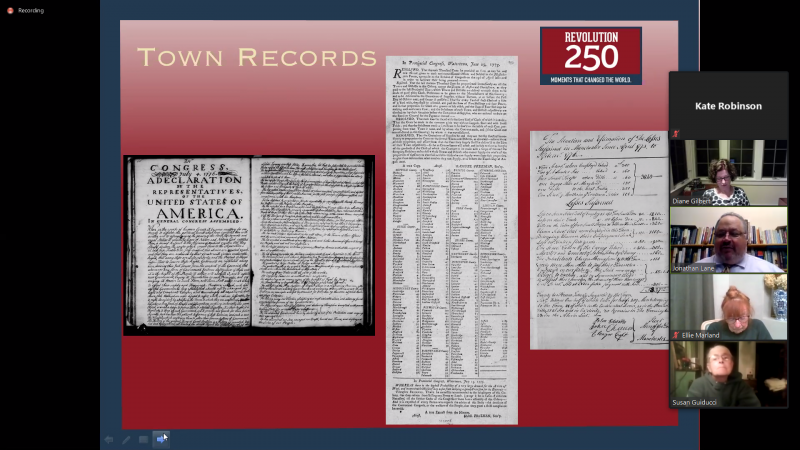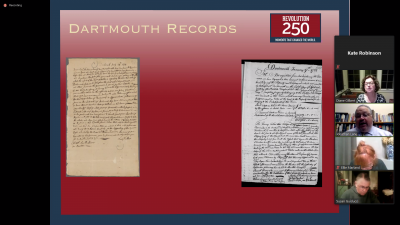Dartmouth during the American Revolution
Nearly nine million dollars.
That’s how much the 1778 British raid on Old Dartmouth cost the town in damages, in today’s dollars: $8.89 million*. (At the time, Dartmouth comprised the current town as well as what is now the city of New Bedford and surrounding towns including Acushnet, Fairhaven, and Westport.)
According to historian Jonathan Lane of Revolution 250, a project celebrating the 250th anniversary of the events leading up to the American Revolution, Dartmouth citizens reported in 1783 that the British had destroyed £105,960 (Massachusetts pounds) worth of property during the raid.
Lane spoke about the incident at a virtual presentation on Oct. 21 hosted by the Dartmouth Heritage Preservation Trust, a grassroots organization aiming to preserve and educate the public about elements of Dartmouth’s past.
During the talk, Lane discussed events already commemorated by the project, including the 1766 repeal of the Stamp Act, commemorated in 2016 by hanging 108 lanterns at Liberty Tree Plaza — just as the colonists themselves celebrated 250 years ago.
In 2018, members of Revolution 250 also dressed up as redcoats and took over Faneuil Hall to mark the 1768 occupation of Boston by British troops, which culminated in the 1770 Boston Massacre — one of the last events commemorated by the group in March 2020 before the coronavirus pandemic hit.
Lane noted that despite Covid-19, there are still major upcoming events planned, including a national conference in 2021 and commemorations for the burning of the HMS Gaspee in 2022 and the Boston Tea Party in 2023.
But he also brought the conversation back to Dartmouth, which played a supporting role in bringing supplies in from the south when the British retaliated for the Tea Party by closing the port of Boston in 1774.
“This was an experience that every community took part in,” Lane said, noting that many towns copied the entire text of the Declaration of Independence into their record books “so it would be part of that for all time.”
Other contributions from Dartmouth in the record, Lane said, include a letter from resident Benjamin Akin to Samuel Adams dated July 1774 in which he requests Adams to tell him what he needs from the town to support the “common cause.”
As for the infamous 1778 raid, eyewitness accounts in the historical record describe how around 4,000 British troops alighted in what is now New Bedford, Fairhaven, and Padanaram, setting ships, stores, and — in Padanaram — houses on fire to stop the people from sending supplies and funds to the cause.
“That was the largest British force ever to land in North America up to that point,” Lane said.
He also noted that the £105,960 in damages listed in another document is “pretty significant.”
“For context, Boston filed a claim for around £300,000, and Charlestown about £125,000,” he said. “Dartmouth is hands away the third on that list.”
To learn more about Dartmouth Heritage Preservation Trust, visit dhpt.org. To learn more about Revolution 250, visit revolution250.org.
*Calculations based on figures from historian John J. McCusker, “How Much Is That in Real Money? A Historical Price Index for Use as a Deflator of Money Values in the Economy of the United States,” 1992, and adjusted for inflation through 2020.
















